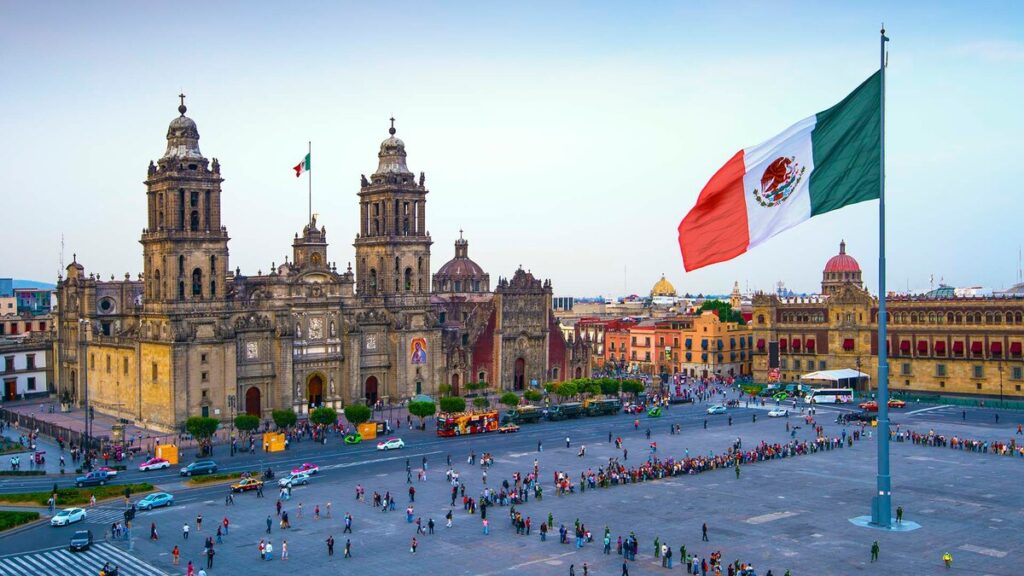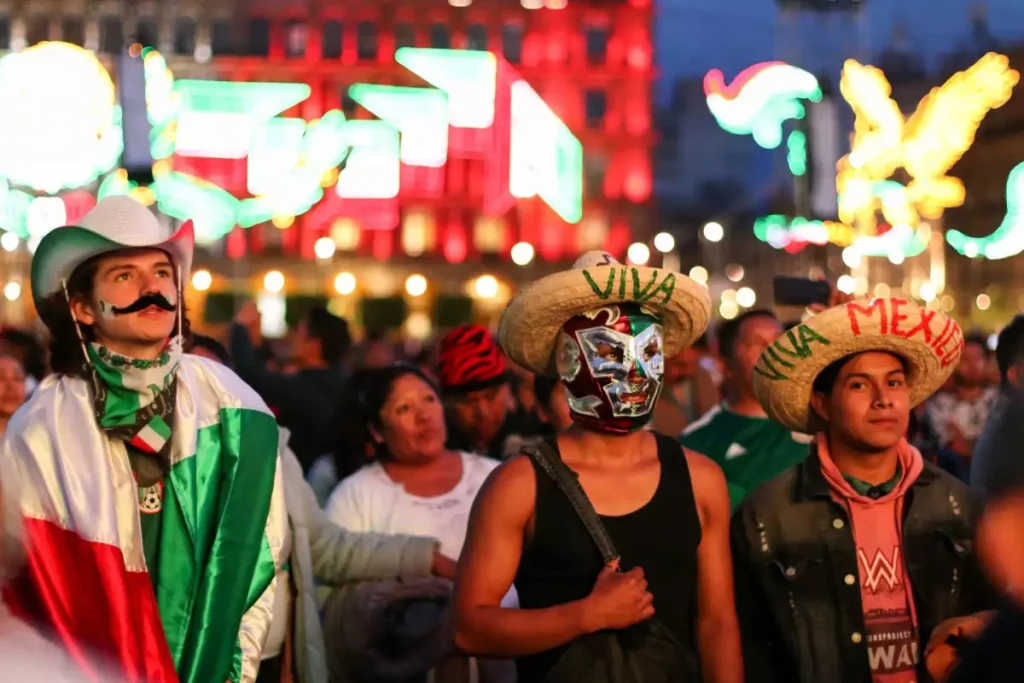Communication in Mexico has never been as vibrant, as challenging, and as full of opportunities as it is today. In a country where diverse realities coexist — from the vibrant Mexico City to the industrial hubs in the north or the culturally rich communities in the south — brands know that there are no magic formulas or universal messages. What works today is agility, personalization, and the ability to connect in real time.
And that’s precisely where the heart of Mexico’s key PR trends lies, shaping the agenda for 2025 and paving the way for what we’ll see across Latin America. Because although each market has its own particularities, there’s no doubt: what happens in Mexico becomes a reference for the region.
In this article, I’ll walk you through, in a close and grounded way, the forces moving public relations strategies, the opportunities they bring, and how a communications agency in Latin America can help you capitalize on this unique moment.
1. The Integration of AI in Communication
Artificial Intelligence is no longer a promise but a day-to-day tool. In Mexico, AI agents are already helping PR teams work with greater precision and speed. We’re talking about systems capable of:
● Monitoring in real time thousands of articles, mentions, and digital conversations.
● Analyzing the sentiment behind each mention to identify reputational risks before they explode.
● Drafting multi-format content that human teams later refine with their creative and cultural touch.
In a country of over 120 million inhabitants, where multiple languages and cultural nuances coexist, AI becomes an ally to personalize messages according to the region, community, or even audience type.
Still, one key point remains: AI does not replace human teams; it enhances their capabilities. Cultural sensitivity, journalistic instinct, and the ability to tell stories remain 100% human territory. The difference is that now, with technology, teams can focus on the strategic while AI handles the repetitive.
You may be interested: Digital Trust in Times of AI: Mexico’s New Technological Challenge
2. The Rise of Social Commerce and Digital Activations
If there’s one place where social media has real weight in daily life, it’s Mexico. TikTok, Instagram, and WhatsApp are part of the routine of millions, not just as entertainment spaces but also as platforms for shopping and recommendations.
Social commerce is booming. More and more consumers buy directly through social media, driven by influencer recommendations or interactive promotions. And here’s where PR plays a fundamental role: it’s not just about selling but building trust and narrative around the brand.
Digital activations are gaining traction in formats that blend virtual with physical: live-streamed launches, immersive experiences via augmented reality, or campaigns where local communities become protagonists.
The result? An ecosystem where brands don’t just talk but listen, interact, and co-create with their audiences.

3. A Greater Focus on Reputation and Sustainability
In Mexico, today’s consumer doesn’t settle for the first message they hear. They ask, compare, research, and demand consistency. That’s why sustainability and social responsibility can’t be secondary or reduced to a yearly statement.
Mexicans now want concrete, measurable commitments: from reducing environmental footprints to engaging with local communities or ensuring diversity in teams. Corporate narratives must be backed by real actions because inconsistency is quickly punished on social media.
For a communications agency, this is a huge opportunity: helping brands design reputation strategies that combine data, human stories, and transparency. It’s no longer enough to say “we’re sustainable”; it must be demonstrated with cases, figures, and testimonials.
4. More Specialized Media Relations
Traditional media remain relevant in Mexico, but the landscape has changed. Today, PR is not only about landing on the front page of a national newspaper but also about building strong relationships with specialized niches: from energy and fintech outlets to health, consumer goods, or technology portals. This requires much more prepared spokespeople, able to speak with authority to expert journalists and hold technical conversations without losing the human touch.
This is where media training comes in: preparing spokespeople to understand each outlet’s needs, adapt their messages, and convey confidence in complex contexts. A good piece in a sectoral medium can weigh as much or more than a national front page, especially when credibility in professional communities is at stake.
5. Real-Time Communication
Mexico is a country of contrasts, dynamic and with a political and social agenda that can change overnight. In this context, real-time responsiveness is vital for any PR strategy.
Brands can no longer wait for weekly meetings to decide how to react; they need clear crisis management protocols, 24/7 monitoring teams, and immediate response plans. Digitalization makes this possible: dashboards with up-to-the-second metrics, alerts for negative sentiment on social media, and crisis drills to prepare teams for action without improvisation.
The challenge is not just reacting quickly but doing so with consistency and empathy. A rushed response can worsen the situation, while a thoughtful —yet swift— action can strengthen consumer trust.
Mexico as a Gateway to LATAM
Mexico is not only a massive market in itself; it also serves as a platform for expansion into Latin America. Many global companies choose to establish themselves here first before expanding into Colombia, Chile, Brazil, or Argentina. Why? Because the country combines a sizable market, proximity to the United States, strategic trade agreements, and a young, digitally connected talent pool.
For partners in Asia-Pacific, Europe, and the U.S., understanding Mexican trends is key to designing regional campaigns. What works in Mexico can be adapted and replicated in other markets, always with the necessary cultural adjustments.
A Latin American communications agency with a presence in Mexico and other regional countries can be the partner that translates global vision into local execution, ensuring message consistency while maintaining cultural relevance.

Frequently Asked Questions (FAQ)
Why is Mexico considered a strategic hub for PR in Latin America?
Because it combines market size, cultural diversity, and a key geopolitical role as a bridge between the U.S. and the rest of the region. Additionally, many multinational companies choose it as their first stop when expanding into LATAM.
Can AI really replace the work of a communications agency?
No. AI is a tool that supports and accelerates processes, but creativity, cultural interpretation, and trust-building remain human functions. The most effective approach is a hybrid strategy that combines technology with human sensitivity.
How relevant are traditional media relationships in Mexico today?
They remain very important but are now complemented by relationships with specialized and digital outlets. The key lies in segmenting and choosing the right channels for each message.
What challenges do brands face in sustainability communication?
The main challenge is proving with actions what they communicate. Mexican consumers are critical and expect concrete evidence, not empty promises.
What advantages does working with a Latin American communications agency offer compared to handling communication from headquarters?
A Latin American agency provides local knowledge, cultural adaptation, and a network of contacts in media and communities. This ensures that the global strategy is executed with relevance in each country while maintaining regional consistency.
The Time to Act is Now
PR in Mexico in 2025 reflects a profound shift: communication is no longer linear but interactive, digital, and strategic. From AI integration to sustainability focus, from specialized media to real-time response, everything points to one goal: building trust in a dynamic and demanding environment.
For global brands, Mexico is much more than a market: it’s the gateway to the entire region. And for agencies, this is the perfect time to consolidate as strategic allies combining technological innovation, cultural knowledge, and regional vision.
The question is not whether your brand needs PR in Mexico, but: are you ready to seize this moment and turn your communication into a real competitive advantage?
About MarketCross
We are a global public relations agency that since 1996 has been helping to create connections between great brands and their audiences in an innovative and personal way, enhancing their reputation and narrative to drive business outcomes.
Our track record of co-constructing with more than 300 clients from diverse cultural backgrounds and industries has given us a unique perspective for delivering customized and effective strategic communications solutions to anywhere in the world.
Our team of experts, located in major cities around the world, combines a global outlook with in-depth local market experience and a sense of curiosity that transcends borders and ensures that they stay abreast of the changes and trends occurring in different markets and societies.
MarketCross has received several different international awards including the Latin America Excellence Awards (2016 and 2018), Eikon Chile (2022), Eikon Argentina (2023), Eikon Internacional (2023 and 2024).



